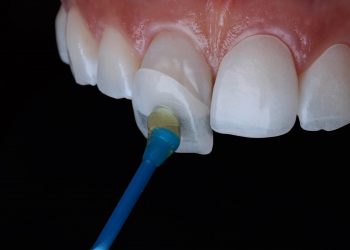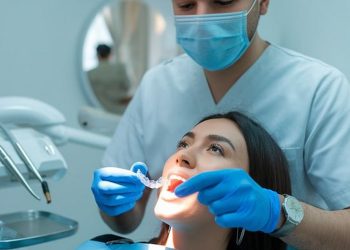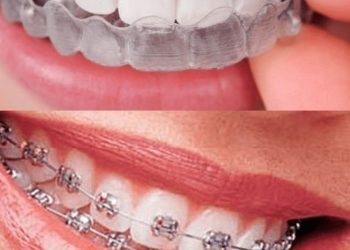When you’re dealing with intense tooth pain, facial swelling, or sensitivity to hot drinks, it could be more than a cavity. You might have a tooth abscess, an infection that forms inside the tooth or gums and can spread if left untreated.
When it comes to treating a tooth abscess, the first thing you need to know is that the faster you get to the dentist, the better. From antibiotics to a root canal, several treatments can clear up the infection and bring relief.
Let’s break down what it is, how to spot it early, how dentists treat it, and what steps you can take to heal and prevent it from returning.
What Is a Tooth Abscess?
A tooth abscess forms when bacteria invade the inner layers of your tooth or surrounding gum tissue, often following tooth decay, gum disease, or injury. The result is a buildup of pus that creates pressure, pain, and sometimes serious complications if ignored.

Types of Tooth Abscesses
There are three main types:
- A periapical abscess starts at the tip of the tooth’s root and is usually the result of untreated cavities.
- A periodontal abscess forms deeper in the gums next to the tooth, often due to advanced gum disease.
- A gingival abscess affects only the gum tissue, typically caused by trapped food or injury.
Your emergency dentist will determine which one you have through exams and imaging.
What Causes a Tooth Abscess?
Most abscesses develop due to poor oral hygiene or untreated dental issues. These are the common causes of tooth abscess:
- Deep cavities that reach the pulp
- Gum disease or injury to the gumline
- A cracked or chipped tooth
- Past dental work gone wrong
Who’s at Higher Risk?
Some people are more prone to developing abscesses. If you regularly skip brushing or flossing, consume a sugary diet, smoke, or live with dry mouth or chronic conditions like diabetes, your risk is higher.
Pro Tip: Preventive care and regular cleanings go a long way in lowering that risk.
How to Diagnose a Tooth Abscess
Recognizing a tooth abscess early can save you from serious pain and possibly save your tooth. Here’s how to tell if you might have one and what your dentist will do to confirm it.

Spotting the Symptoms
A tooth abscess doesn’t always make itself obvious right away, but pain is usually the first red flag. You might notice a persistent, throbbing ache that gets worse when you lie down. The area around the tooth can become swollen, tender, and hot to the touch. In more serious cases, pus may drain from the gums, or you may develop a fever and swollen lymph nodes.
These tooth abscess symptoms shouldn’t be ignored. The earlier you recognize them, the better your outcome.
What Your Dentist Looks For
When you visit the dentist, they’ll scrutinize the area. They may tap on the tooth to test for sensitivity or take an X-ray to look for signs of infection and bone loss. If there’s a periapical abscess, the X-ray will often show a dark spot at the root tip, indicating infection. In some cases, they might perform a cold or percussion test to determine how deeply the nerve is affected.
Why Early Diagnosis Matters
Early diagnosis can make the difference between saving a tooth and losing it. Left untreated, a tooth abscess can spread to your jawbone, sinuses, or even your bloodstream. That’s why dentists often stress the importance of coming in at the first sign of gum swelling and tooth pain, waiting can increase both the damage and the cost of treatment.
Your Partner in Achieving a Healthy, Radiant Smile
Whether you’re dealing with a tooth abscess or just need a routine check-up, our team is here to provide the best treatments tailored to your needs!
Treatment Options for Tooth Abscess
Treating a tooth abscess depends on the location and severity of the infection. Your dentist’s goal is to eliminate the infection, relieve the pressure, and prevent it from coming back.
Draining the Abscess
The first step in many cases is draining the abscess. This is a simple but highly effective tooth abscess drainage procedure, where the dentist creates a small opening in the gum or tooth to release the built-up pus. This often provides immediate relief from pain and pressure, though it’s usually followed by additional treatment to fully resolve the infection.

Antibiotics for Infection Control
If the infection has spread or there’s swelling and fever, your dentist will likely prescribe antibiotics for a tooth abscess. These help stop the bacteria from traveling further. However, antibiotics alone don’t eliminate the abscess, they’re part of a broader treatment plan that usually includes drainage or repair.
Root Canal or Extraction?
If the tooth can be saved, your dentist may perform a root canal for an abscessed tooth. This involves removing the infected pulp, cleaning the inside of the tooth, and sealing it to prevent future infections. In more severe cases, or when the tooth is too damaged to restore, an extraction may be the only option. Your dentist will help you weigh the pros and cons of both treatments based on your situation.

Recovery and Aftercare Following Tooth Abscess Treatment
Once your tooth abscess is treated, it’s important to take care of your mouth to prevent future infections. Maintaining good oral hygiene and making some healthy lifestyle changes can help protect your teeth.
Tips for Promoting Healing After Treatment
Here’s what you can do to protect your teeth after treatment:
- Brush Twice a Day: Brushing with fluoride toothpaste helps remove plaque, which is full of bacteria that can lead to cavities and abscesses.
- Floss Daily: Flossing removes food particles and plaque from between your teeth that brushing can’t reach.
- Use Mouthwash: An antibacterial mouthwash can help kill germs that brushing and flossing might miss.
- Regular Dental Check-ups: Even after treatment, regular dental visits are essential. Your dentist can spot potential problems early.
What to Eat and What to Avoid
During recovery, choose soft, soothing foods like yogurt, mashed potatoes, smoothies, or scrambled eggs. Avoid anything crunchy, spicy, or acidic, as these can irritate the treated area or slow healing.
Certain foods and habits can increase your risk of developing another abscess or worsening existing issues. Here’s what to avoid:
- Sugary Foods and Drinks: Sugar fuels the bacteria in your mouth, leading to tooth decay and potential abscesses.
- Acidic Foods: Citrus fruits and vinegar can soften tooth enamel, making it easier for bacteria to cause decay.
- Hard Foods: Nuts, ice, or hard candy can crack your teeth or damage dental work, leading to infections.
- Smoking: Smoking harms your gums and increases the risk of gum disease, which can lead to abscesses.
- Excessive Alcohol: Alcohol can dry out your mouth, reducing saliva and making it easier for bacteria to thrive.
Don’t Skip the Follow-Up
After treatment, it’s important to return for any scheduled checkups. Your dentist will want to ensure the infection is completely gone and that healing is progressing well. If you had a root canal, you might also need a crown or further dental restoration procedures to strengthen the tooth.

Want to know about some of the best home remedies for a tooth abscess? Check this helpful guide on Healthline.
Preventing Tooth Abscesses in the Future
Abscesses are preventable with consistent oral care and early intervention.
Keep Up with Dental Visits
Seeing your dentist regularly, ideally twice a year, lets them catch small problems before they become big ones. This includes cavities, early gum disease, and tiny cracks that could eventually lead to infection.
Practice Strong Oral Hygiene
Brush your teeth twice daily using fluoride toothpaste and floss at least once a day. Rinsing with an antibacterial mouthwash can also reduce harmful bacteria.
Know the Early Warning Signs
The best prevention is being proactive. If you notice lingering pain, sensitivity to hot or cold, red gums, or swelling, don’t wait. Acting early can help prevent abscessed teeth and reduce your need for emergency care.
Conclusion
A tooth abscess is more than a minor dental problem, it’s a signal that your body is fighting an infection and needs support. Whether the solution is antibiotics, a root canal, or extraction, the key is acting quickly and following through with recovery and prevention. With good habits and professional care, you can keep your smile healthy and pain-free.
FAQs
-
What are the first signs of a tooth abscess?
Early signs include sharp or throbbing tooth pain, swelling in the gums or jaw, sensitivity to hot and cold, and sometimes pus or a bad taste in the mouth.
-
Can a tooth abscess go away without treatment?
Unfortunately, no. While symptoms might temporarily lessen, the infection won’t heal without proper treatment and can even spread to other parts of the body.
-
How is a tooth abscess diagnosed?
Dentists typically use a combination of visual exams, X-rays, and tests for sensitivity or swelling to diagnose the abscess and locate the source of infection.
-
What is the best treatment for a tooth abscess?
The best treatment depends on the severity, but typically involves draining the abscess, prescribing antibiotics, and either performing a root canal or extracting the tooth.
-
How long does it take to recover from a tooth abscess?
Most people begin to feel better within a few days of treatment. Full recovery usually takes one to two weeks, depending on the treatment and individual healing response.
Let’s Hear from You!
Have you ever experienced a tooth abscess?
Feel free to share your thoughts, experiences, or questions in the comment section below!





